
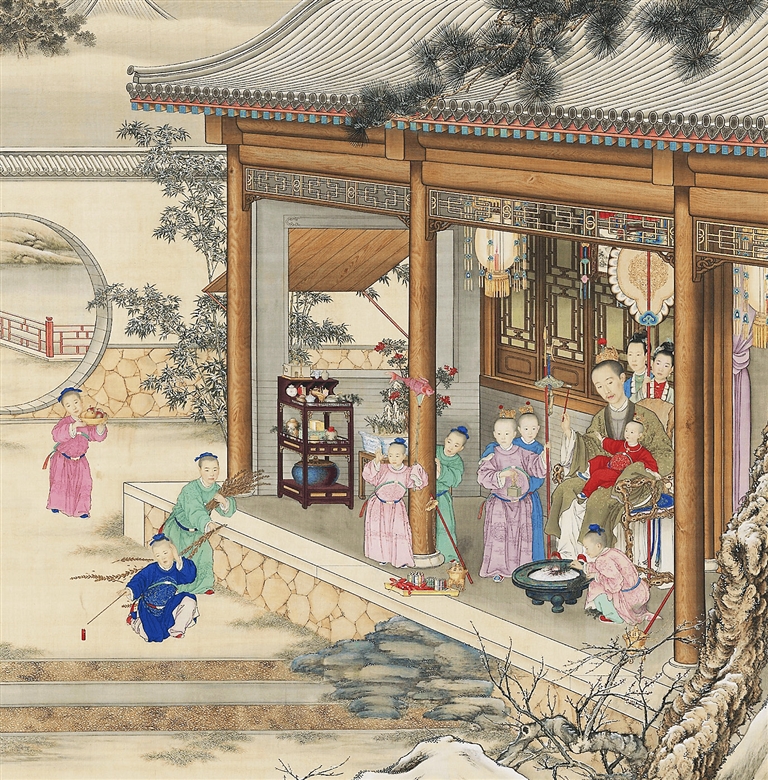
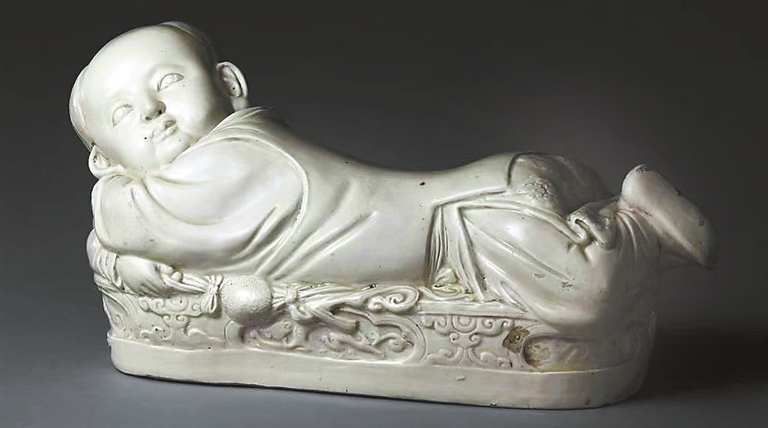
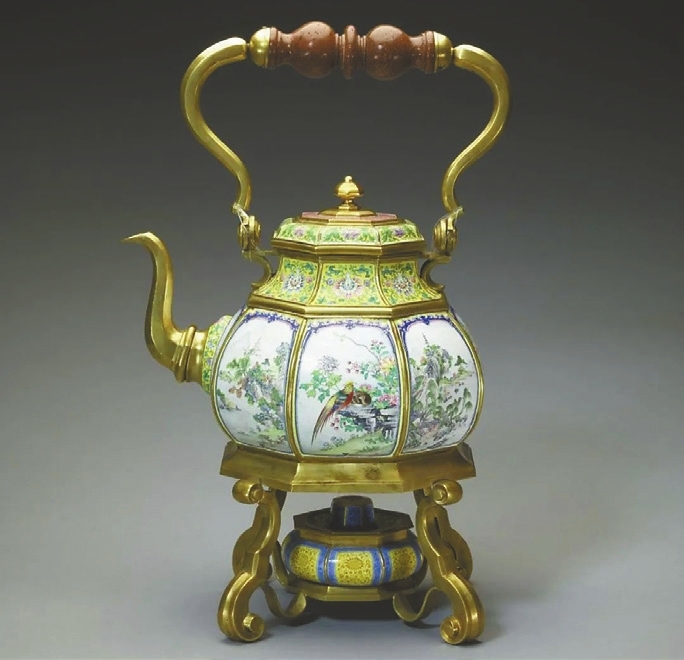
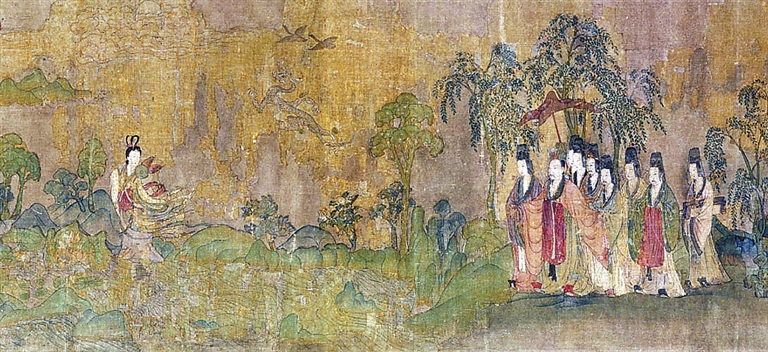
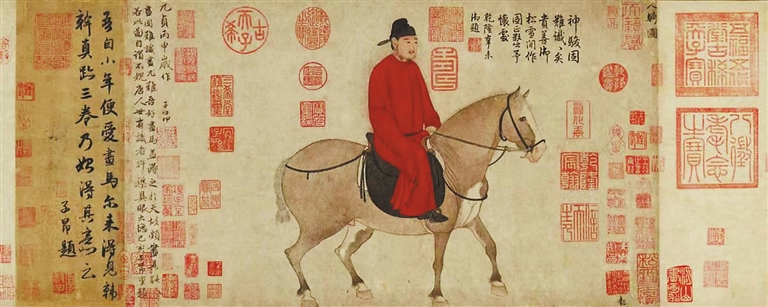
THE Hong Kong Palace Museum will open to the public July 2, with opening exhibitions jointly curated by the Palace Museum in Beijing, the Hong Kong museum announced Tuesday. A total of 914 treasures from the collection of the Beijing museum will be on display on rotation at the new 13,000-square-meter attraction on the West Kowloon District harborfront. Some pieces will be shown in Hong Kong for the first time. The loan of the Palace Museum’s collection will be the largest since its establishment in 1925. Spanning nearly 5,000 years, the works on loan are rich and diverse, including paintings, calligraphic works, bronzeware, ceramics, jadeware, enamelware, lacquerware, seals, costumes, textiles, jewelry, books and architecture models. The relics will be on display in Hong Kong for a month to over a year. Ancient paintings, calligraphic works and silk relics are very sensitive to light, temperature and humidity, so the exhibition period for these items is only one to three months. To preserve the items and reduce wear and tear, some of the cultural relics will not be shown for several years after returning to the Palace Museum in Beijing. Among the borrowed items, more than 160 ones are classified as national treasures. Well-known works include a Song Dynasty (960-1279) copy of Jin Dynasty (266-420) artist Gu Kaizhi’s painting “Rhapsody on the Luohe River Goddess” and “Autumn Colors Among Rivers and Mountains” painted by Zhao Boju of the Song Dynasty. The former was adapted from an eminent long-celebrated lyrical poem of the same name from more than 1,800 years ago, while the latter is famous for presenting the recognizable landscape in a blue-and-green style. Other national treasures include ceramics such as an extremely rare Ru Kiln brush washer from the Northern Song Dynasty (960-1127), and an imperial jade seal used by emperors during the Qing Dynasty (1644-1911). The Hong Kong Palace Museum is also applying new technologies such as 3D-printing and artificial intelligence to engage with the public, especially the young people, said Louis Ng, director of the museum. Ng said the museum aspires to become one of the world’s leading cultural institutions committed to the study and appreciation of Chinese art and culture while advancing dialogues between different countries. General admission is priced at HK$50 (US$6.37), while special exhibition tickets will be HK$120. Eligible students and seniors can enjoy half prices. Children younger than 6 can enter free of charge. The museum will be free to all Wednesdays during the first year of opening, and 150,000 free general admission tickets will be sponsored by companies and organizations for distribution to disadvantaged groups. Ng said the idea is to make visits affordable to more people and boost community engagement. “Art and culture are not only for the intellectual. They come from life and what we are trying to do is to improve people’s lives with them,” he said. For instance, the museum is pushing a program that integrates cultural elements into the designs of local furniture to reinvent the traditional sector. “Opening the museum is just the first step. We will stay open to insights from all sectors of the community,” Ng said. The Hong Kong Palace Museum construction lasted about three years. Traditional-style bricks and tiles, which are elements typically seen in ancient Chinese architecture, are not used in the museum. However, through the mix of modern architectural techniques and traditional design concepts, you can still feel its classical Eastern charms. The seven-story building is wide on the top and narrow on the bottom. The shape bears resemblance to many classic Chinese utensils, the most representative of which would be “fangding,” a rectangular cauldron standing on four legs and crowned with two facing handles, one of the most important shapes used in ancient Chinese ritual bronzeware. Looking closer, visitors will discover various details echoing with those of the Palace Museum in Beijing. To imitate ancient city walls, large parts of the Hong Kong Palace Museum’s walls are covered with fair-faced concrete, a modern finishing design exposing the concrete surface without any covering. Some parts are of a smooth surface, while some others boast decorative lines. Golden curved aluminum panels are used on the facade to create an effect of glazed tiles. In front of the main entrance, transparent glass plates are lined up on the ground, recreating the flowing waters of river in front of the Palace Museum in Beijing as they glisten under the sun. A few steps ahead, red doors decorated with golden doornails will welcome visitors into this fascinating world of historical gems. Stepping inside, the distinctive “central axis” concept in Beijing is used in the atrium. The central axis, formed during the Yuan Dynasty (1271-1368) and developed in the Ming (1368-1644) and Qing dynasties, is a line that runs through the center of Beijing from south to north, dividing the old city into two and arranging buildings on both sides symmetrically. The Palace Museum in Beijing is one of the best-known attractions along the axis. Due to limited space in Hong Kong, the central axis in the Hong Kong Palace Museum extended vertically instead of horizontally, connecting different floors and forming atrium spaces facing three different angles. Following the opening of the M+ museum in November last year, the Hong Kong Palace Museum is expected to be a new attraction of the iconic West Kowloon Cultural District, which aims to be a world-class arts district. (Xinhua, China Daily, Global Times) | 
